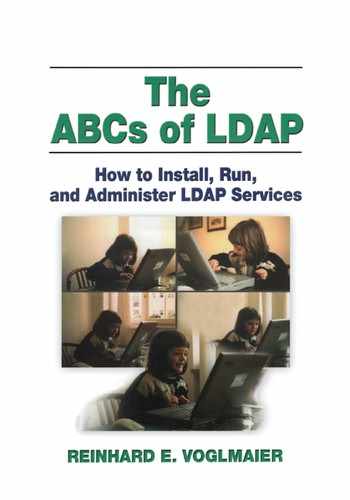0%
25Chapters
0-1Hours read
0kTotal Words
Table of Contents
- Cover
- Half Title
- Title Page
- Copyright Page
- Table of Contents
- 1 The LDAP Protocol
- 2 LDAP Basics
- Example: An Enterprise with a Few Departments
- Objects in LDAP: Object Classes, Attributes, and Schema
- Server Configuration
- First Steps with LDAP
- Updating a Directory with a Batch Process
- The LDIF Standard
- Ldapsearch Revisited: Search Filter
- LDAP: Is This a Protocol?
- Your Favorite Browser Speaks LDAP
- Conclusion
- 3 LDAP Models
- 4 LDAP: Some Practical Details
- 5 Distributed Architectures
- 6 LDAP APIs
- LDAP Command-Line Tools
- LDAP and PHP
- Working with the Result Identifiers
- Conclusion: An Example
- Adding, Deleting, and Modifying Entries
- What Remains?
- Perl and LDAP
- 7 LDAP Directory-Server Administration
- Open-Source Software
- Getting the Directory Server Up and Running
- Securing Your LDAP Server
- LDAP Server Configuration
- Load the Data
- Log Files
- Starting and Stopping the Server
- Backup and Recovery
- Service-Level Agreement
- Backup Methods
- System Monitoring
- User Administration
- LDAP Users, Groups, and UNIX
- Administration Utilities
- 8 LDAP and Web Services
- 9 The Design of Directory Services
- Appendix A Acronyms
- Appendix B LDAP Requests for Comments and Drafts
- Appendix C Useful Links
- Appendix D Standards
- Appendix E Configuration of OpenLDAP
- Appendix F Playing with Replication in OpenLDAP
- Appendix G Playing with OpenLDAP Proxy Server
- Index
